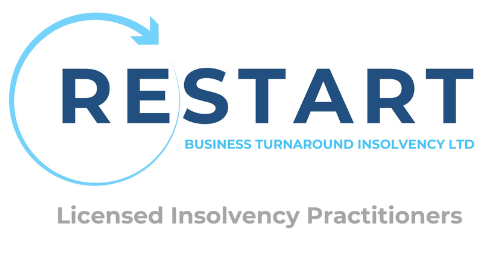
How Does MVL Work?
A Members’ Voluntary Liquidation (MVL) is a process that allows a solvent company to wind up its affairs in an orderly manner. To be eligible for an MVL, a company must be solvent. In other words, it must be capable of settling all its debts within 12 months of initiating the liquidation process. Common reasons for using the MVL procedure include:
- Retirement: If you want to retire and close the business.
- Family Business Transition: When you want to step down from a family business, and no one else wishes to run it.
- Business Exit: If you no longer want to manage the company.
But how does the MVL process work?
MVL (Members’ Voluntary Liquidation) procedure is initiated with the directors making a Declaration of Solvency, confirming that the company can pay its debts within a specified period. The majority of directors then sign the declaration, and a general meeting is held to appoint a liquidator. The liquidation is advertised in the Gazette, and is filed with the authorities. The liquidator then realises all company assets, which are then distributed among shareholders.
Keep reading to find out more about how MVL works, and whether it is the best decision for your company.
How MVL Works
As a process that is initiated by the directors of a company, there are a series of steps that must be followed to complete a successful Members’ Voluntary Liquidation process.
Signing the Declaration of Solvency
- Before proceeding with MVL procedure the directors must make a sworn Declaration of Solvency.
- This declaration confirms that the company can pay its debts, including interest, within a specified period (usually no longer than 12 months from the date of liquidation).
- It includes details such as the company’s assets, liabilities, and the directors’ assessment of solvency.
Next Steps for an MVL:
- Sign the Declaration: The majority of directors sign the declaration in front of a solicitor.
- General Meeting: A general meeting of the shareholders is called within five weeks to pass a resolution for voluntary winding up.
- Appoint a Liquidator: At the meeting, appoint an authorised insolvency practitioner as the liquidator. They will take charge of winding up the company.
- Resolution Advertisement: Advertise the resolution in The London Gazette within 14 days.
- File with Authorities: Send the signed declaration to Companies House or the appropriate authority within 15 days of passing the resolution.
- Asset Realisation: The liquidator assumes the responsibility of realising the company’s assets. This entails the sale of these assets and the settlement of any outstanding liabilities.
- Distribution to Shareholders: Following the completion of debt settlement, any remaining funds are equitably distributed among the shareholders. The distribution aligns with the respective proportions of their shareholdings.
- Dissolution of the Company: Once all company assets have been divested, and all financial obligations have been met, the liquidator takes the final step by submitting an application to Companies House, seeking the official dissolution of the company.
In addition to the steps above, several other formalities require attention during the MVL process. These include notifications to your creditors, HMRC and the submission of various documents to Companies House. The guidance and expertise of the appointed liquidator prove invaluable in ensuring the compliance with all necessary requirements throughout this structured liquidation process.
How Long Does it Take to Complete MVL?
The actual liquidation time will vary depending on the complexity of the company’s financial situation. A straightforward MVL may take between three to six months to complete. At Restart BTi, we look to deal with an MVL as quickly as possible, and we do this partly by requesting our clients to sign what is called a ‘deed of indemnity.’ This allows for the earliest possible release of funds, often within a week of the MVL’s completion.
If you want to ensure that the MVL process runs as smoothly as possible, ensure that you:
- Prepare all the necessary documentation in advance of the process
- Respond to the liquidator’s requests in a timely manner.
- Cooperate with the liquidator in selling the company’s assets.
- Choose a liquidator with the appropriate experience in dealing with MVLs.
- Keep the liquidator informed of any changes to the company’s circumstances.
- Be proactive in resolving any potential disputes between the company, its creditors, and its shareholders.
What are the Restrictions of MVL?
Costs
The costs of an MVL involve professional fees for the liquidator and can be significant, depending on the size and complexity of the company.
Complexity
The MVL process demands adherence to meticulous documentation and compliance with statutory obligations, which can be time-consuming.
Loss of Control
Once the liquidation process has begun, the liquidator has control over the company’s assets and affairs.
Potential for Disputes
Disputes can arise between the company, its creditors, and its shareholders during the MVL process.
Can I Be a Director After MVL?
When a liquidator is appointed, directors:
- No longer have control of the company or anything it owns
- Cannot act for or on behalf of the company
As a director you must:
- Cooperate with the liquidator with regards to any information about the company they ask for
- Hand over the company’s assets and books and records
Legally, after the MVL process has been completed there is nothing to stop you from becoming a director or shareholder of a new legal entity immediately after liquidating your old one. However, there’s Targeted Anti Avoidance Rule (“TAAR”) Legislation to be wary of. The Legislation is there to prevent people abusing the process. This means if you do set up a new company, the personal tax treatment on funds distributed from the earlier liquidation may be challenged.
Although it may be tempting to start a new business, it’s vital that you ensure compliance has been adhered to in order to minimise any risks. Consulting a professional will provide clarity and help you choose the best path forward.
Receive Expert MVL Advice Today
If you are considering the best options for liquidation, our team of experienced financial professionals are on-hand to provide confidential advice. Contact us today to find out more and to book in a consultation.

Established in 2018, the directors at Restart BTi have over 50 years of experience to assist companies, business owners and individuals with expert advice and tailored solutions when facing financial difficulties.
